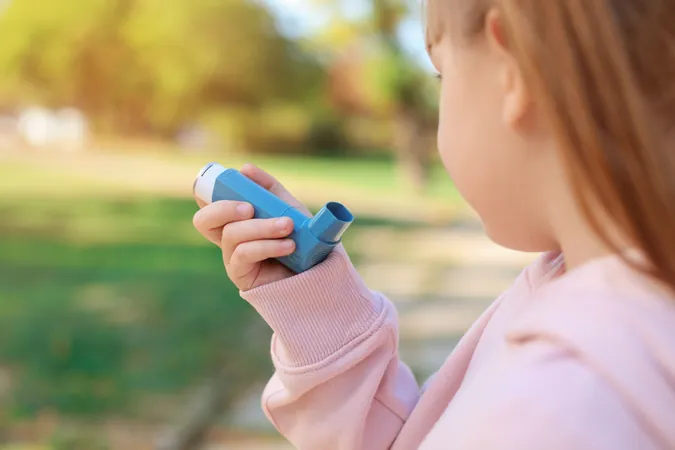
Crucial Signs Indicating Potential Sudden Arrhythmic Death Syndrome in Young Individuals Uncovered
2025-04-04
Author: Li
Introduction
Recent research sheds light on the alarming prevalence of Sudden Arrhythmic Death Syndrome (SADS) among young people, particularly impacting athletes. A retrospective study has revealed that 22% of sudden cardiac deaths in young individuals can be attributed to SADS, a condition that has not received adequate attention despite its seriousness.
Study Overview
Presented at the prestigious ESC Preventive Cardiology Congress 2025 in Milan, Italy, the findings highlight vital symptoms such as syncope (fainting), seizure-like episodes, and electrocardiogram abnormalities as key indicators that may precede SADS. Dr. Matilda Frisk Torell from the Sahlgrenska Academy, University of Gothenburg, emphasized the urgency of recognizing these signs to avert tragic outcomes.
Research Methodology
The study analyzed a comprehensive dataset of 903 sudden cardiac death cases among individuals aged 1 to 36 years in Sweden, covering the period from 2000 to 2010. For every case, five population-based controls were examined to gain deeper insights into the risk factors associated with SADS. The data collected included death certificates, autopsy reports, medical records, and electrocardiograms, providing a robust basis for the researchers' conclusions.
Key Findings
Of particular concern, approximately 64% of SADS cases occurred in males, with a median age of death being just 23 years. The study also identified that one in three individuals who experienced SADS had been hospitalized or had a medical appointment within 180 days prior to their death. This suggests a significant need for closer monitoring of young individuals presenting with known symptoms of cardiovascular issues.
Statistical Insights
Disturbingly, the research indicated that 4.2% of SADS cases had been previously hospitalized for syncope, and 3.5% due to convulsions, compared to significantly lower percentages in the control group. Additionally, 11% had a prior diagnosis of arrhythmic disease, while 18% exhibited abnormal electrocardiograms, with pre-excitation being the predominant finding.
Symptoms and Correlation
Moreover, 52% of study subjects reported symptoms like palpitations, syncope, and gastrointestinal issues before their untimely deaths. The correlation between these symptoms and SADS underscores the importance of ongoing education for healthcare providers to facilitate early detection and intervention.
Recommendations
Dr. Frisk Torell emphasized the need for enhanced awareness of SADS symptoms, advocating for wider implementation of preparticipation screening for young athletes. Currently, many young athletes undergo limited health assessments, which can lead to missed opportunities to identify at-risk individuals.
Conclusion
The call to action is clear: with increased vigilance and improved screening practices, the medical community can potentially save lives by intervening before a tragedy occurs. As research continues to delve into the risk factors associated with SADS, including the role that mental health and infectious diseases might play in triggering episodes, society must prioritize the health and safety of young individuals, particularly in high-risk activities like sports.
Final Thoughts
This study serves as a wake-up call for parents, athletes, and healthcare providers alike – recognizing the signs of SADS could prove crucial in preventing further heart-wrenching tragedies in our youth.





 Brasil (PT)
Brasil (PT)
 Canada (EN)
Canada (EN)
 Chile (ES)
Chile (ES)
 Česko (CS)
Česko (CS)
 대한민국 (KO)
대한민국 (KO)
 España (ES)
España (ES)
 France (FR)
France (FR)
 Hong Kong (EN)
Hong Kong (EN)
 Italia (IT)
Italia (IT)
 日本 (JA)
日本 (JA)
 Magyarország (HU)
Magyarország (HU)
 Norge (NO)
Norge (NO)
 Polska (PL)
Polska (PL)
 Schweiz (DE)
Schweiz (DE)
 Singapore (EN)
Singapore (EN)
 Sverige (SV)
Sverige (SV)
 Suomi (FI)
Suomi (FI)
 Türkiye (TR)
Türkiye (TR)
 الإمارات العربية المتحدة (AR)
الإمارات العربية المتحدة (AR)